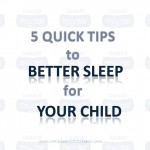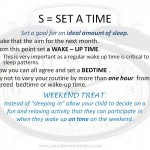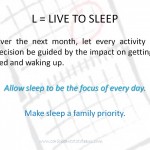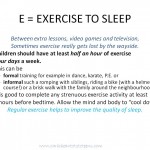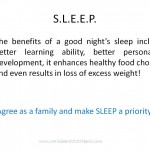10 Reasons Why I Will continue to give My Children Handheld Devices
Last week we published the link and a short commentary based on the Huffington Post article: 1o Reasons Why Handheld Devices should be banned from children under the Age of 12. This week we are delighted to share with you a response to that same article published by blogger Hipmombrarian: mother of two girls and a librarian.
We certainly appreciate the fact that girls hardly enter technological fields. This is quite marked in the Caribbean Region. Does this trend start from as young as under 12 years? Could the young child who isn’t using technology often be … left behind?
Everything in moderation! Please tell us your thoughts after you have enjoyed the other side of the tech coin: 10 Reasons Why I Will continue to give My Children Handheld Devices.
Learn More10 Reasons Why Handheld Devices Should Be Banned for Children Under the Age of 12
The entire staff of Tots to Teens stands behind the American and Canadian Paediatric Associations in their call for parents and caregivers to consciously monitor children and their exposure to electronic media.
Note well: children under age 2 years should not be exposed to electronic media at all!
Talk to your pediatrician and your family doctor about any concerns you may have.
http:// http://m.huffpost.com/us/entry/4899218
The consequences of overexposure are real.
Learn MoreStop Bullying! Idea from TODAY.com
Teacher leads inspiring mission to stop bullying on – TODAY.com
So many good ideas are free! Let’s keep creating and keep sharing. This is such a simple and effective exercise. Check out the link below,
http://m.today.com/news/teacher-leads-inspiring-mission-stop-bullying-2D79323842
Learn MoreManaging Challenging Behaviours in Your Children

Matthew McKenzie, Clinical Psychologist
Getting your child to cooperate with you can be one of the most challenging experiences as a parent. However, it can be achieved if you’re willing to adjust a few things. Changing the child’s environment is key; your attitudes, behaviours, rules, methods of discipline and lifestyle constitute the environment in which your child lives.
your attitudes, behaviours, rules, methods of discipline and lifestyle
constitute the ENVIRONMENT in which your child lives.
One of the things parents are always hungry for answers about is the root of the challenging behaviours in children. Some of the more pronounced ones are inconsistent discipline, excessive punishment of the child, lack of parental supervision and angry adult role models. One thing’s clear – many of the factors are under parental control and can be eliminated by parents, if parents choose to do so.
In some families parents consistently fail to notice, praise and reward the child’s good behaviour. The child therefore has little reason to display good behaviour, because he knows his parent/s will not respond to it. It is also the case in these families that parents angrily respond to the child’s bad or inappropriate behaviour. Thus these behavioural problems become a means by which children gain some attention from their parents, even if it’s negative attention.
In some of these families parents allow all kinds of misbehaviour to go unchecked and then periodically the crack down on the child with excessively harsh or abusive punishment; almost as if this punishment is payment for everything negative that the child has done over the past three months. Such inconsistent behaviours by parents place defiant children at greater risk for full-blown antisocial behaviour in adolescence and later life.
“inconsistent behaviours by parents place defiant children at
greater risk for full-blown antisocial behaviour in later life”
Over-reliance on punishment is an approach that creates many more problems than it solves. Excessive use of punishment trains the child to lie and to engage in sneaky behaviour to avoid punishment. Children may begin to feel fearful of their parents and actively avoid them. Punishment for bad behaviour should preferably be used sparingly. For punishment to be effective it has to be used as little as possible; occur immediately after the child displays unwanted behaviour; be carried out in the same manner each time; be handled in a calm business-like way; and be of short duration.
The key is consistency. When you do not enforce the rules of your home consistently, your child learns that sometimes I can get away with it. Keeping even a few of these things in mind can go a long way to help you manage your child’s behaviour more effectively. Remember, there are no bad children, just bad behaviours and so when we punish, we seek to punish the behaviour and not the child.
This article first appeared in the CHILD’S MONTH SUPPLEMENT of the Paediatric Association of Jamaica,
Gleaner May, 2013
Matthew McKenzie is a Clinical Psychologist at Tots to Teens.
He can be contacted via the office or via email at matthew.mckenzie@caribbeantotstoteens.com
Learn MoreHunger and Behaviour
What would your answer be if someone asked, “What affects a child’s behaviour?”
- Genetics
- Socialization
- Faith & Religion
- Culture
Rarely would the answer include hunger. But believe it or not, hunger plays a major part in behaviour. Look at the most basic form of behaviour, newborn babies. How do you known when babies are hungry: their behaviour changes. Most definitely you won’t see a hungry baby laughing and playing. Likewise, the statement “a hungry man is an angry man” is factual.
Narrowing down to school-age children, hunger will affect them both academically, and socially. Teachers may report a child as lazy, disruptive, withdrawn/antisocial, or they may find the student is unable to grasp the simple concepts being taught in class. It is important to note that it isn’t absolute that this is simply a lazy child, a disruptive child, an antisocial child, or a child that isn’t smart. It could just be that the child is hungry. Yes: HUNGRY.
Hunger is not simply a craving. Hunger is a physiological condition that is brought about by the anticipation of a meal. Hunger may include a long-term painful experience brought on by lack of food over a prolonged period. Hunger can lead to starvation, stunted growth and development, and even death. Depending on the duration of hunger, the child’s behaviour may be change immediately by simply feeding them.
From as far back as 1998, Dr Murphy et al conducted and published research in the Journal of the American Academy of Child and Adolescent Psychiatry that revealed “Hungry and at-risk for hunger children were twice as likely as not-hungry children to be classified as having impaired functioning by parent and child report. Teachers reported higher levels of hyperactivity, absenteeism, and tardiness among hungry/at-risk children than not-hungry children.”

In addition, the Food Research and Action Center’s Breakfast for Learning report in 2010 reported that, “hungry children have lower math scores, are more likely to have to repeat a grade, are more likely to be hyperactive, absent or tardy, and have more behavioural and emotional problems in comparison to other children.”
Research coming out of Barbados, in conjunction with Harvard Medical School has recently confirmed that long-term changes occur in children who were hospitalized because of severe starvation. Although they had caught up with their physical growth, “these adults were more anxious, less sociable, less interested in new experiences and more hostile than those who were well-nourished throughout childhood”, as reported by Dr Janina Galler and her team in the Journal of Child Psychology and Psychiatry.
Now that you know that hunger affects your child’s behaviour, academically and socially, ensure that your child is properly fed. The best way of doing so is to ensure that they have the most important meal of the day:
BREAKFAST
Our Guest Blogger is Chenell Griffiths of Nutribites.
Check her out at nutribites.webs.com or follow her on twitter @NutriBites
Learn MoreHow do you Doo? Part 3: Get Set – position matters
WEANING: Often times during weaning the texture of baby’s stool will change . The colon and rectum must adapt to this change and expel the firmer, sometimes drier stools efficiently. Many toddlers will undergo transient constipation with FIRM DRY stools and INFREQUENT passage of stools (less than once every 3 days) during this adjustment phase.
WITHHOLDING STOOL: Subsequently a few children, boys more than girls, may develop a tear “FISSURE” because of the hard dry stool. This will cause blood on the tissue or on the stool, and PAIN on the passage of stools and consciously or unconsciously avoiding stooling thereafter.
POTTY TRAINING: After potty training, most children are keen to sit on the toilet like a “big kid”! Many children do just fine on the toilet, but there is a large number of children who struggle to pass stool in that position… feet a dangling.
-
WE ARE OBSESSED WITH SQUATTING
SQUATTING IS GOOD!
Squatting is the bending of the hip and knee joints simultaneously
It results in a straightening of the rectum and enhances natural relaxation of the anal sphincters.
Numerous articles have been published about the importance of the squatting position for ease of passing stools. We at Caribbean Tots to Teens do NOT support any particular brand commercial product, but we do like this video explanation of the benefits of squatting seen here.
[youtube http://www.youtube.com/watch?v=pYcv6odWfTM?rel=0&w=640&h=360]It is important to note that you do NOT need a commercial device, toddlers can be held in the squatting position with their backs towards the adults chest and a steadying hold just below the bended knees. They may also squat naturally when using a potty placed on the floor. Older children (up to about 20 kilograms) can stand on the toilet seat … be sure its sturdy… and squat down OR pull up a drink crate / stepping stool to allow little feet to rest comfortably with the hip and knees bent while sitting.
Does your little one need to be set in position to pass stool? Have you tried and of these techniques? Do you use a technique we haven’t mentioned here? Share with our readers, contact us! We want to know.
How do you Doo? is a series written by Dr Carolyn Jackson that addresses common infant and child stooling issues.
Learn MoreIS AUTISM REALLY A PUZZLE? THE POWER OF A CAMERA

I thought my experience with this little boy (whose name I was unable to get) was very profound as it never involved “words” but the true understanding of non-verbal communication and the strength of understanding its power when dealing with someone diagnosed with Autism.
On April 2, 2013, JASA (Jamaica Autism Support Association) put on a presentation at UWI addressing the prevalence of Autism and research that had been done in Jamaica. There was a little boy there who notable made a lot of sounds which for some may have been highly distracting. I discovered later that he had Autism. I happened to have my camera with me taking pictures of the speakers. I saw him through the corner of my eye, etching his way over to me with smiling eyes but would return to where his mother sat. He repeated this action a couple of times. Finally he came over pointing to my camera lens. His ‘words’ sounded like babble but I understood it clearly. He was talking in the best way he could to me about the camera and wanting to play with it. This moment organically evolved as I naturally encouraged him to stand in front of me, placing the camera cord on his shoulders while we explored the camera allowing him to take pictures. He returned to his mom and funny enough he started making the loud sounds again. She immediately sent him back to where I was sitting, which I found amusing. He came over and we explored the camera some more with me telling him how to use the camera. My words may have been too complex but he stayed with me holding and using the camera. Eventually he returned to his mother but was noticeably quieter in his interaction with her.
Later on, I moved to the front of the room to take more pictures of Kathy Chang, Dr. Samms-Vaughan & Dr. Garbutt. We all could hear this little voice shouting (his words were not specific) and running up to where I sat. He came up to me still shouting and touched the camera. It was as if he was saying, “Lesli I want to see the camera”. I allowed him to explore it and took his hand and we walked to the banner entitled “April is Autism Awareness Month” and had him takes pictures with the camera. We returned to the presentation and he was extremely calm compared to before. This little boy was probably no more than three years old and had never met me before but somehow connected and “communicated” with me through the camera. While this may not have been an art therapy session, it was clearly an indication of the power and awareness needed to understand the different ways in which a person diagnosed with Autism may communicate. In this case the camera served as a powerful tool.
Lesli-Ann Belnavis, Art Therapist, Caribbean Tots to Teens
Learn MoreAn Attitude of Gratitude
How do we shape the minds and hearts of children to be grateful and content?
Learn More

